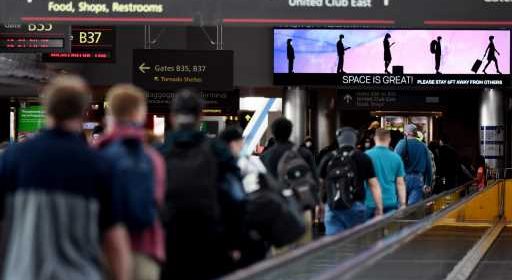Colorado may have dodged a Thanksgiving COVID-19 spike, though virus still widespread

Two weeks after Thanksgiving, Colorado hasn’t seen a spike in COVID-19 cases and hospitalizations, though health officials aren’t ready to breathe easy yet.
Dr. Rachel Herlihy, the state epidemiologist, said it’s possible an increase still could show up in the next few days, as happened following the Independence Day and Labor Day weekends. But it could be that any increase from holiday travel was offset by decreases in other settings, she said at a meeting of a governor’s advisory committee on Thursday morning.
“So far, we’re not seeing an increased trend associated with Thanksgiving,” she said. “Either it’s too soon, or all the things we did in the state really made a difference.”
About a week before Thanksgiving, some counties moved into Level Red on the state’s dial framework. Red counties, now including the entire Front Range, have to close indoor dining and limit capacity in other nonessential businesses.
Dr. John Douglas, executive director of the Tri County Health Department, said it’s difficult to be sure to what extent specific policies worked. People may have changed their behavior because of concerns about the virus during the same weeks Adams County limited spectators at sporting events, moved up last call, limited indoor dining and set a 10 p.m. curfew, he said at a Thursday afternoon news conference.
Public health orders “have been shotguns,” he said. “We can’t tell which pellet made a difference.”
New cases peaked in mid-November at unprecedented levels, with an average of 5,069 new infections recorded per day. The seven-day average dropped slightly, then bumped up again, to 4,207 cases on Wednesday. Despite some fluctuations, it appears new cases have largely stabilized, though at much higher levels than Colorado saw in the spring, Herlihy said.
“We’ve been in a high plateau for the last three weeks or so,” she said.
Hospitalizations are starting to decrease, though they’re still well above spring levels, with 1,684 people hospitalized as of Wednesday, Herlihy said. Deaths haven’t started to decline, though it’s possible they will over the next few weeks, she said.
“There’s obviously still a substantial burden on our health care system,” she said.
If Colorado can avoid a Thanksgiving bump in cases, and do the same with the December holidays, it could give schools a chance to reopen in January, Douglas said. While little spread seems to be happening in classrooms, learning has been hampered when students have to quarantine because they’re bringing in the virus from the rest of the community, he said.
“We probably need to not only continue the downward trend, but accelerate it, to give our schools some oxygen,” he said.
Source: Read Full Article